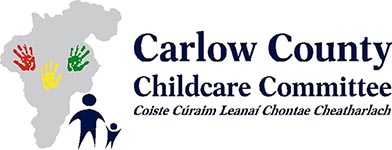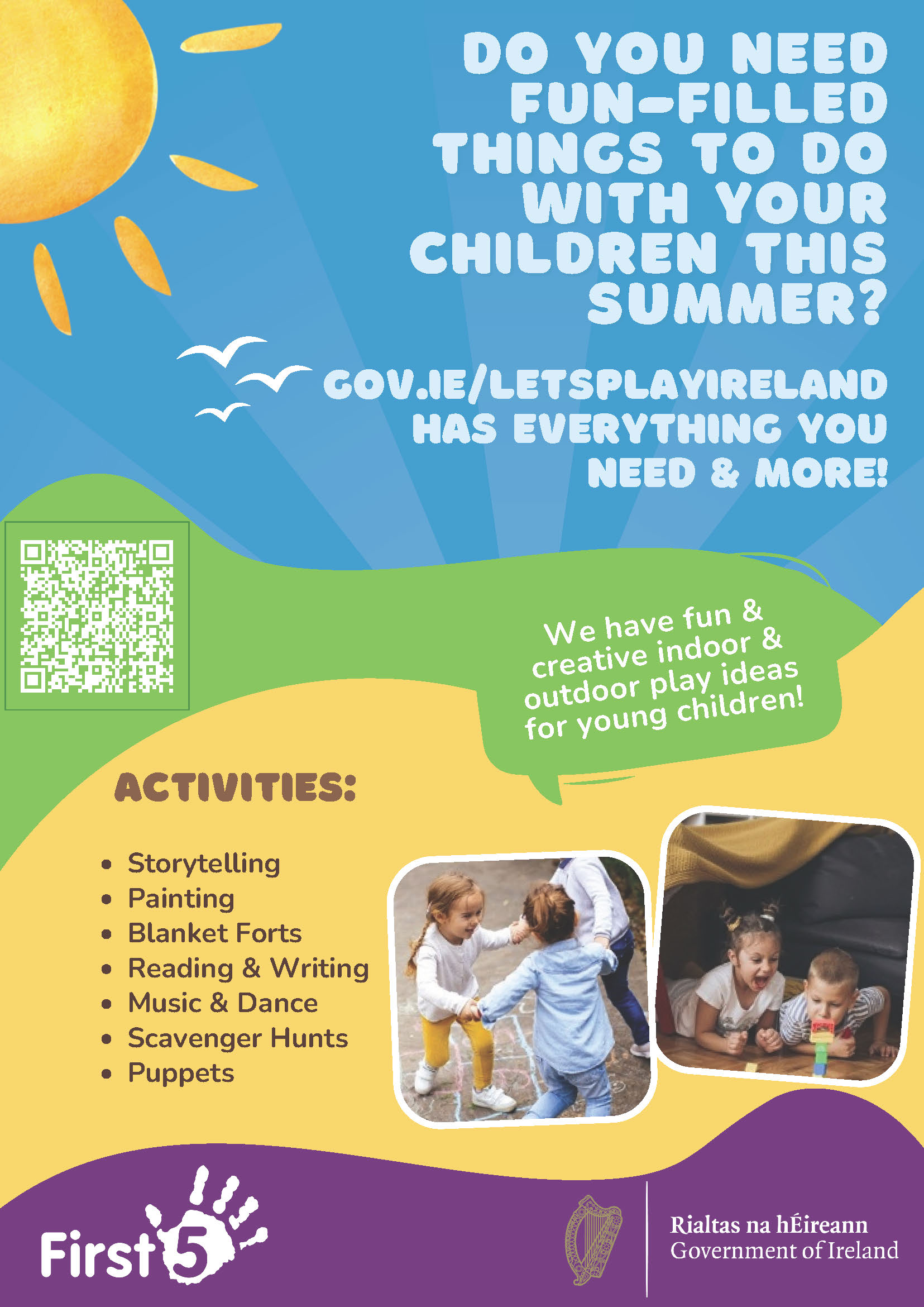The Minister for Children, Disability and Equality, Norma Foley, has today announced a €330,000 investment in new measures designed to strengthen prevention and early intervention services for children so every child and young person across Ireland experiencing disadvantage, adversity and trauma has access to timely support.
This funding represents a strategic investment in the futures of Ireland’s children. Children and young people growing up with disadvantage, trauma, or exclusion face barriers that can affect their health, learning, and future potential. But when support comes early and is built on strong evidence it can transform lives.
Grants of up to €30,000 will be made available to community and voluntary sector organisations working with children and young people through a prevention and early intervention approach.
This funding is made available through the What Works initiative, funded by the Dormant Accounts Fund, and reflects the department’s ongoing commitment to ensuring that services for children are based on the best available data, research and innovation
Minister Foley said:
1. Enhancing Quality Fund 2025
The 2025 Enhancing Quality Fund aims to promote continuous improvement and innovation using a process of problem-solving in prevention and early intervention services for children and young people
Successful applicants will support the What Works initiative to build on the development of implementation structures and learning harnessed from over a decade of investment in prevention and early intervention in order to improve outcomes for children, young people and their families.
The fund is open to practitioners and service providers in not-for-profit organisations working with children, young people and their families and who have a strong emphasis on prevention and early intervention.
These grants will support organisations to support the effective use of data in service provision for children and young people around Ireland.
Further information can be found at the following link: https://whatworks.gov.ie/enhancing-quality-fund-2025/
2. What Works/Foundations Online Prevention and Early Intervention Webinars
This series of four ninety-minute online interactive webinars is designed for commissioners, practitioners and anyone interested in applying evidence-based research and will be delivered by Foundations – the what works centre for children and families (UK).
Foundations developed the What Works Ireland Evidence Hub. The What Works Ireland Evidence Hub provides information about prevention and early intervention programmes that have been evaluated and shown to improve outcomes for children and young people.
These workshops will take place between July 2025 and October 2025.
For further details and to register please visit:
https://whatworks.gov.ie/prevention-and-early-intervention-webinars-2025/
11 July 2025: The value and purpose of different research designs for understanding
what works (Click here to register)
In this webinar we’ll be explaining why different kinds of research are needed to understand how interventions work, and why robust trials are needed to understand What Works. We’ll explore the advantages and limitations of different kinds of research evidence; the difference between evidence strength, evidence standards and evidence hierarchies; and why experimental evidence is typically prioritised for identifying ‘what works’.
19 September 2025: 10 Steps for Evaluation Success: Turning science-based theories into effective interventions (Click here to register)
In this webinar, we’ll discuss how evaluation can help improve the quality of interventions at each stage of their development and explain how the 10 steps map onto the Evidence Hub evidence standards. These steps include developing a theory of change, early stage and pilot evaluation, trials to find out what works, and scaling up.
3 October 2025: Improving the home learning environment (Click here to register)
What works to improve the home learning environment? In this webinar we’ll discuss several evidence-based factors including: the foundations of early learning, especially language learning; the role of parental scaffolding and the home environment; risks to children’s development; and how evidence-based interventions can effectively support children’s early learning at home, from birth to age 5.
17 October 2025: Effective parenting support (Click here to register)
What are effective ways to support parents, particularly those facing adversities? In this webinar we’ll discuss the kinds of complex adversities families may face, which may impact on children’s development and health; what we know about effective parenting interventions, before and after a child’s birth; and the kinds of positive outcomes which interventions can have on children’s development, parenting practice, and parental stress. We’ll also consider the need for equitable access to effective parenting interventions for families from minoritised ethnic backgrounds.
3. Prevention and Early Intervention (PEI) Research
Enabled by funding from the Tulsa Prevention Partnership and Family Support National Office via What Works, the Prevention and Early Intervention Network has spent the last 14 months developing a thematic learning module: The Prevention and Early Intervention (PEI) module is designed to embed a prevention-oriented, child-centred mindset across professional disciplines working with children and families. The module consists of 10 learning units covering core themes such as trauma-informed practice, interagency collaboration, and children’s rights.
It is designed for flexible delivery (online, face-to-face, and hybrid) and targets a broad range of professionals including educators (early years, teachers and colleges), social care providers, public servants and clinicians, as well as third level students. The core objective of the PEI module is to raise awareness and enhance knowledge of the integral components of effective PEI approaches and practices, and their significant role in determining the trajectory of children’s lives.
What Works is providing €30,000 to evaluate the process of developing, piloting, and implementing the PEI module. It aims to ensure that the module is effective, evidence-based, and responsive to the needs of learners and stakeholders. In doing so it will examine the viability of the module as a cross-disciplinary resource. The focus will be on understanding what worked, what could be improved, and how to support broader adoption and sustainability and ultimately, explore the extent to which a thematic and focused PEI module has the potential to contribute to the overall PEI landscape in Ireland.
4. What Works
What Works, funded under Dormant Accounts, is an initiative designed by the Department of Children, Disability and Equality. What Works aims to take a coordinated approach to enhance capacity, knowledge and quality, primarily in prevention and early intervention for children, young people and their families. Four key strands have been identified to embed and enhance prevention and early intervention in children and young people’s policy, service provision and practice:
· Data
· Evidence
· Professional development and capacity building
· Quality
What Works funding supports research and pilots with regard to prevention and early intervention. Further information can be found on the What Works website: https://whatworks.gov.ie/
Since its inception, the What Works initiative, funded under Dormant Accounts, has supported evidence-based innovation to improve outcomes for children, young people and families across Ireland. What Works is designed to fund targeted pilot projects and research initiatives. What Works supports the testing of new approaches to prevention and early intervention while building a robust evidence base for possible future service developments.
The initiative places strong emphasis on research and evaluation as demonstrated by the three previous What Works funds:
- Building Evidence
- Sharing Knowledge
- Learning Together and Digital Solutions
that supported organisations to collect and analyse data on What Works in practice. This research-focused approach supports services to be grounded in proven methodologies.
Previous funding recipients in 2023 included:
- Belong To Youth Services, Youth Work Ireland – Tipperary, Barnardos and Jigsaw;
and in 2022 included:
- Dochas Midwest Autism Support, Down Syndrome – Tipperary, PEIN, Doras Bui, Enable Ireland, National College of Ireland, Familibase and NCBI.
Through collaboration between statutory agencies and community partners, What Works supports the creation of a pipeline from innovation to potential mainstream implementation. By fostering a culture of continuous learning and evidence-based practice, the initiative ensures that promising approaches are properly tested, evaluated and scaled to benefit more children and families nationwide. This model represents a strategic investment in building Ireland’s capacity for effective, data-informed children’s services.


